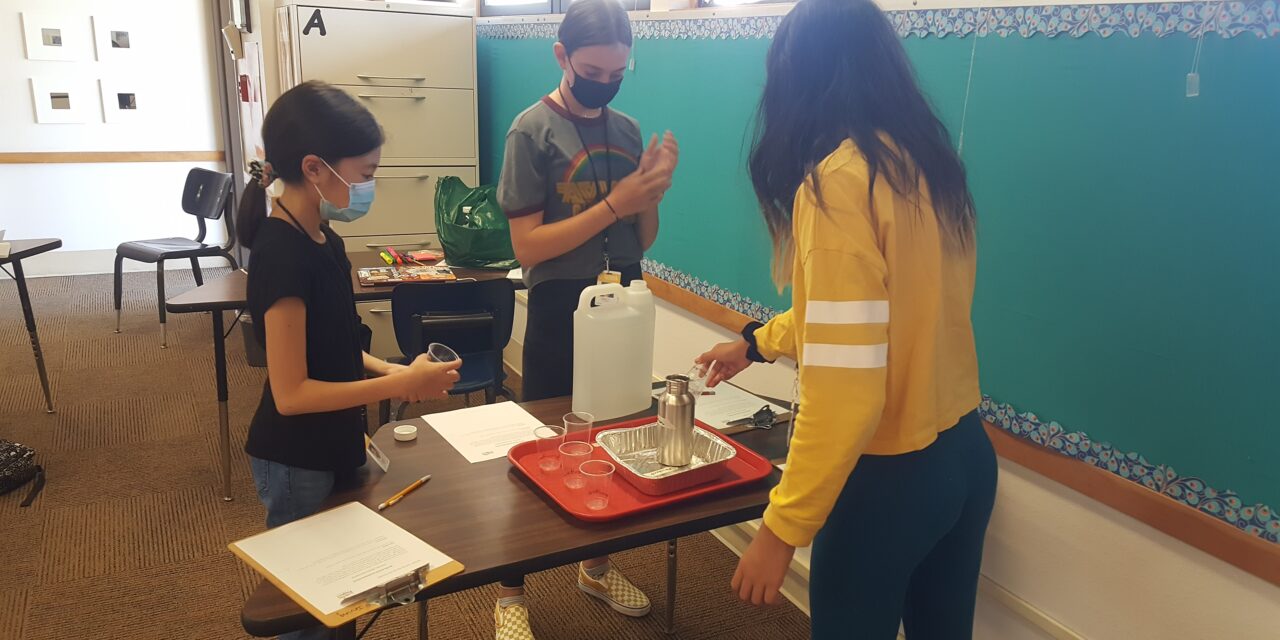By Matthew Piechalak | mpiechalak@francisparker.org
Middle and Upper School student schedules were being finalized for the 2020-21 school year on July 20 when California Governor Gavin Newsom announced the state’s new COVID-19 monitoring list.
Suddenly, the hard work undertaken by Parker’s scheduling team was moot–the entire process would need to be redone.
“We had to scrap the entire summer’s work,” says Interim Head of Upper School Carrie Dilmore. “We knew that original plans, which closely resemble a normal school year, but with masks and spaced furniture, would no longer work. We needed to move to a model that allowed for students to experience school in small groups.”
“We were pretty much done and I was just waiting,” says Associate Head of the Middle School Christi Cole. “We had to rip it all apart because cohorts weren’t a part of the original schedule.”
The Parker Blended learning model was established as a fourth learning option. Under the model, Middle and Upper School students alternate days using the Linda Vista Campus and allow each division to have smaller, cohort–style classes during their on-campus days.
The move to cohorts was based on guidance from the Centers for Disease Control and Prevention (CDC) and the California Department of Health. A cohort is a small group of students who remain together throughout the school day. Minimizing crossover among students limits the potential for virus communal spread, health experts say.
In Upper School, 39 cohorts were created by taking the course requests of students and grouping together the students who have similar schedule requests, Carrie explains.
“In some instances, we needed to change the level of a course to allow for a full cohort to be created,” says Carrie.
While creating schedules for Grade 9 and 10 students was fairly straightforward, the process for the upperclassmen was more difficult, Carrie explains.
“The older students have a lot of choices for courses, which in a normal year makes our school special,” Carrie says. “This year, it posed a great challenge.”
Not all requests for classes could be honored; some students needed to choose other courses.
“For the seniors, we hope that the other courses offer a nice experience this year. Our teachers work very hard to make their classes excellent,” Carrie says. “For the non-seniors, we plan to offer the same courses next year, so we hope they’d be willing to take these extraordinary offerings at that time.”
During a traditional year, the scheduling process typically begins in January with the Upper School Curriculum Night. Between February and April, the Upper School deans begin meeting with students in both small groups and one-on-one meetings to further discuss their schedules.
The ultimate goal, like any previous year, is the health and safety of the students, says Interim Assistant Head of Upper School Andy Losier.
“We make sure that we are keeping their well-being in mind throughout the process,”
In Middle School, the scheduling process typically begins in the spring when students are asked to rank their art and music preferences. Math and language placements are determined for each student, and that information, along with feedback from advisors, is built into conflict matrices to determine availability, Christi explains. For rising Grade 6 students, the scheduling team uses student information shared from the Lower School.
This year, the schedule was complete but needed to be unraveled and redone.
“Suddenly, we had to look at it differently,” Christi says. Along with core classes, the Middle School allowed students to put in requests to be in cohorts with friends–within reason.
“Friend requests are a great thing until you get 12 friends in a cohort that make it hard on a teacher,” she says.
The scheduling team created seven cohorts for both Grade 6 and Grade 7, and eight cohorts for Grade 8.
“It came down to practicality,” Christi says. “We only have seven English teachers in Grade 7, so we can only have seven cohorts. We have a finite number of teachers so we had to juggle.”
Within the confines of the cohort system, the Middle School needed to sacrifice some student choice. Kids did not get choice over their art classes in Grade 7 and Grade 8.
“That’s disappointing for some kids to be assigned an art when they are used to choice,” she says.
“[But] our Middle School families have been understanding about everything. The two areas where we have gotten questions are in the choice of arts and the number of instructional minutes.”
While students will have less in-person time with their teachers under Parker Blended, the course outcomes are the same, stresses Christi, who also teaches math.
“The goals in our classes are the same,” she says. “I know where I wanted to get to and we’ll get there–it’s just a slightly different pathway.”





